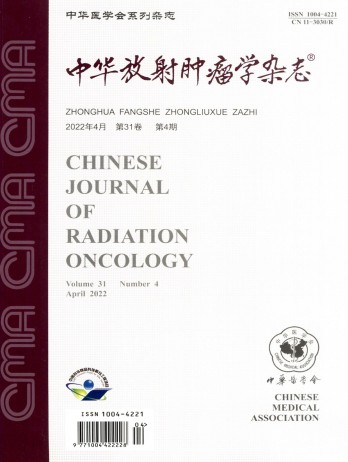Clinical comparison between ductal carcinoma in situ and ductal carcinoma in situ with microinvasion
引用次数: 0
Abstract
Objective To analyze the differences in the treatment patterns, clinical characteristics, treatment outcomes and prognostic factors between breast cancer patients with ductal carcinoma in situ (DCIS) and ductal carcinoma in situ with microinvasion (DCIS-MI). Methods Clinical data of 866 female patients including 631 DCIS cases and 235 DCIS-MI cases treated in our institution between 1999 and 2013 were retrospectively analyzed. The local control (LC), disease-free survival (DFS) and overall survival (OS) rates were calculated by Kaplan-Meier survival analysis. The prognostic factors were identified by Log-rank test. Results Similar LC, DFS and OS rates were obtained between two groups (all P>0.05). The univariate analysis demonstrated that Her-2-positive patients had worse OS and DFS than Her-2-negative counterparts. Patients undergoing breast-conserving surgery without radiotherapy had lower LC and DFS rates compared with those receiving radical mastectomy. Conclusions DCIS and DCIS-MI patients have similar clinical prognosis in terms of OS, LC and DFS. Her-2 positive is an unfavorable prognostic factor for DFS and OS. The LC and DFS rates in the breast-conserving surgery alone group are worse than those in the mastectomy group. Key words: Breast ductal carcinoma in situ; Breast ductal carcinoma in situ with microinvasion; Breast neoplasm/radiotherapy; Breast neoplasm/surgery; Prognosis导管原位癌与导管原位癌伴微侵的临床比较
目的分析癌症导管原位癌(DCIS)与微浸润导管原位癌的治疗模式、临床特点、治疗结果及预后因素的差异。方法回顾性分析我院1999~2013年收治的866例女性患者的临床资料,其中DCIS 631例,DCIS-MI 235例。通过Kaplan-Meier生存分析计算局部对照(LC)、无病生存率(DFS)和总生存率(OS)。预后因素采用对数秩检验。结果两组患者的LC、DFS和OS发生率相似(均P>0.05)。单因素分析表明,Her-2阳性患者的OS和DFS比Her-2阴性患者差。与接受根治性乳房切除术的患者相比,在不接受放疗的情况下接受保乳手术的患者LC和DFS发生率较低。结论DCIS和DCIS-MI患者OS、LC和DFS的临床预后相似。Her-2阳性是DFS和OS的不利预后因素。单纯保乳手术组的LC和DFS发生率低于乳房切除术组。关键词:乳腺导管原位癌;乳腺导管原位癌伴微浸润;乳腺肿瘤/放射治疗;乳腺肿瘤/手术;预后
本文章由计算机程序翻译,如有差异,请以英文原文为准。
求助全文
约1分钟内获得全文
求助全文
来源期刊
自引率
0.00%
发文量
6375
期刊介绍:
The Chinese Journal of Radiation Oncology is a national academic journal sponsored by the Chinese Medical Association. It was founded in 1992 and the title was written by Chen Minzhang, the former Minister of Health. Its predecessor was the Chinese Journal of Radiation Oncology, which was founded in 1987. The journal is an authoritative journal in the field of radiation oncology in my country. It focuses on clinical tumor radiotherapy, tumor radiation physics, tumor radiation biology, and thermal therapy. Its main readers are middle and senior clinical doctors and scientific researchers. It is now a monthly journal with a large 16-page format and 80 pages of text. For many years, it has adhered to the principle of combining theory with practice and combining improvement with popularization. It now has columns such as monographs, head and neck tumors (monographs), chest tumors (monographs), abdominal tumors (monographs), physics, technology, biology (monographs), reviews, and investigations and research.

 求助内容:
求助内容: 应助结果提醒方式:
应助结果提醒方式:


